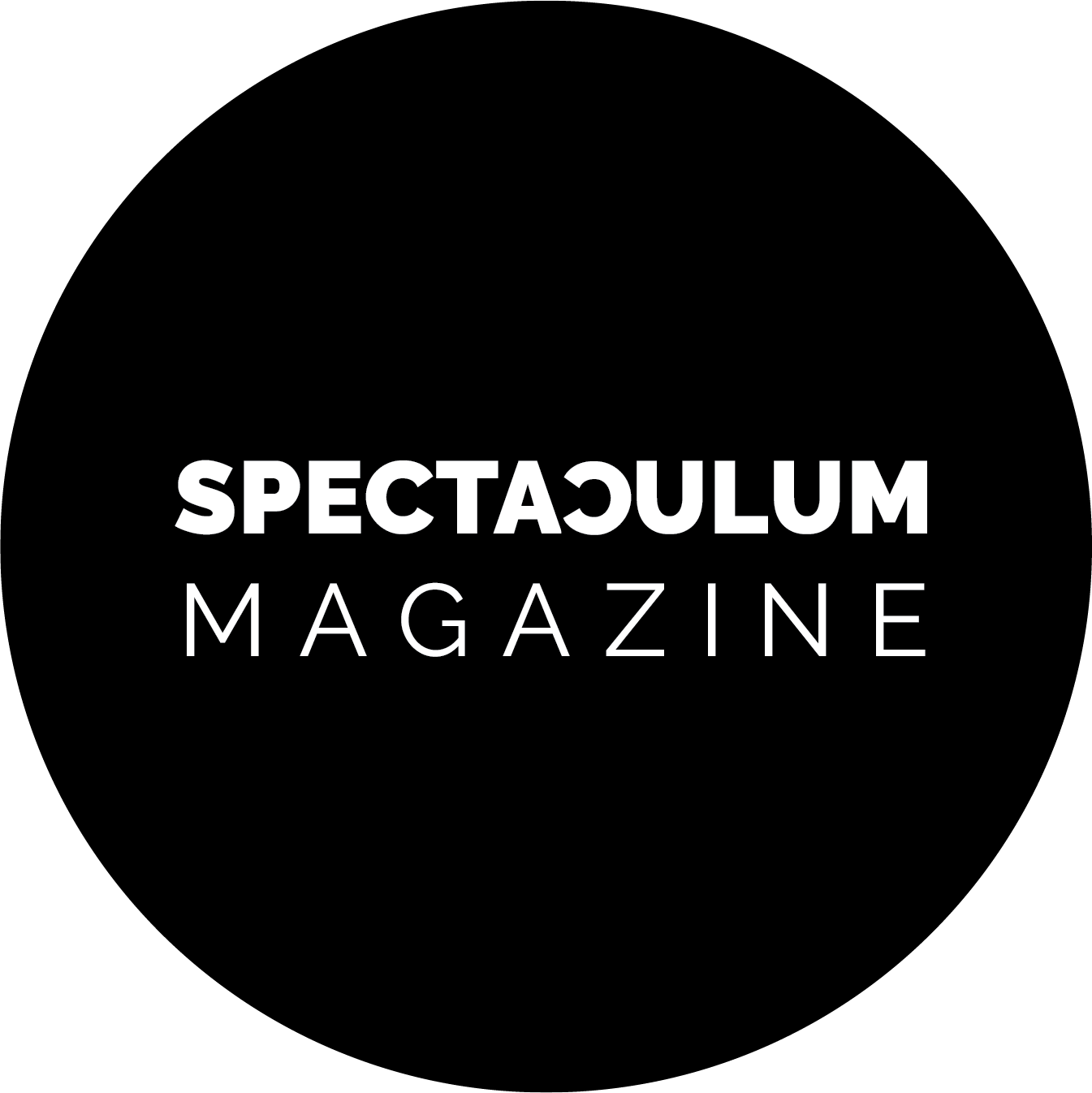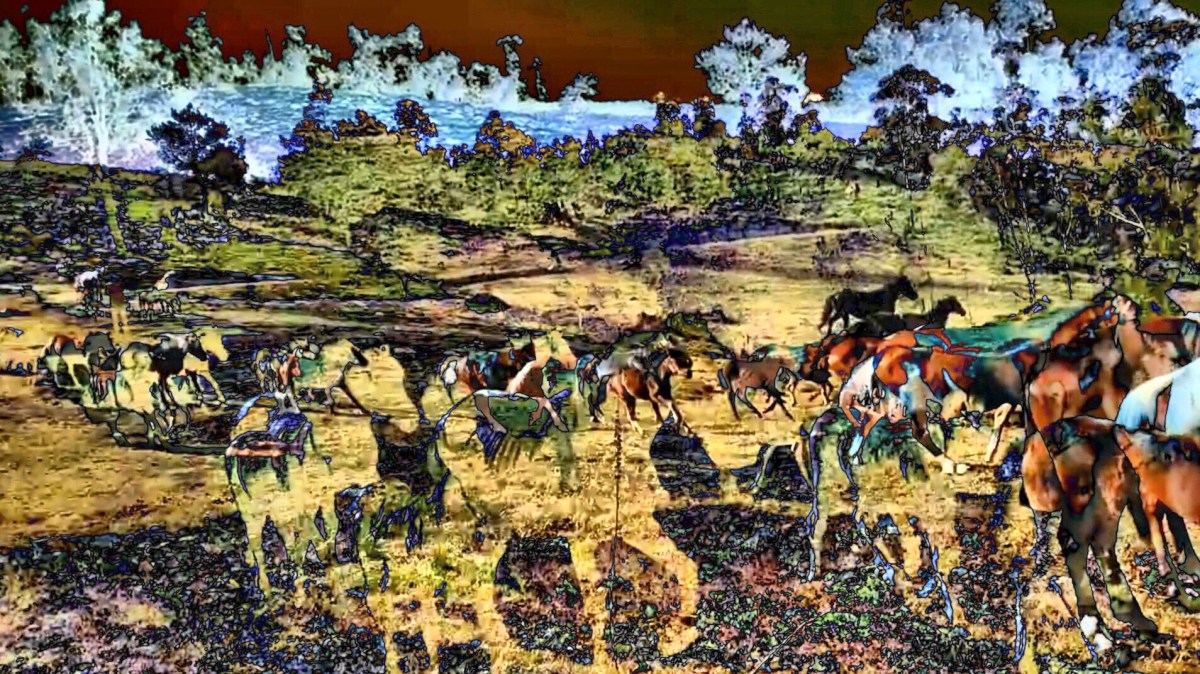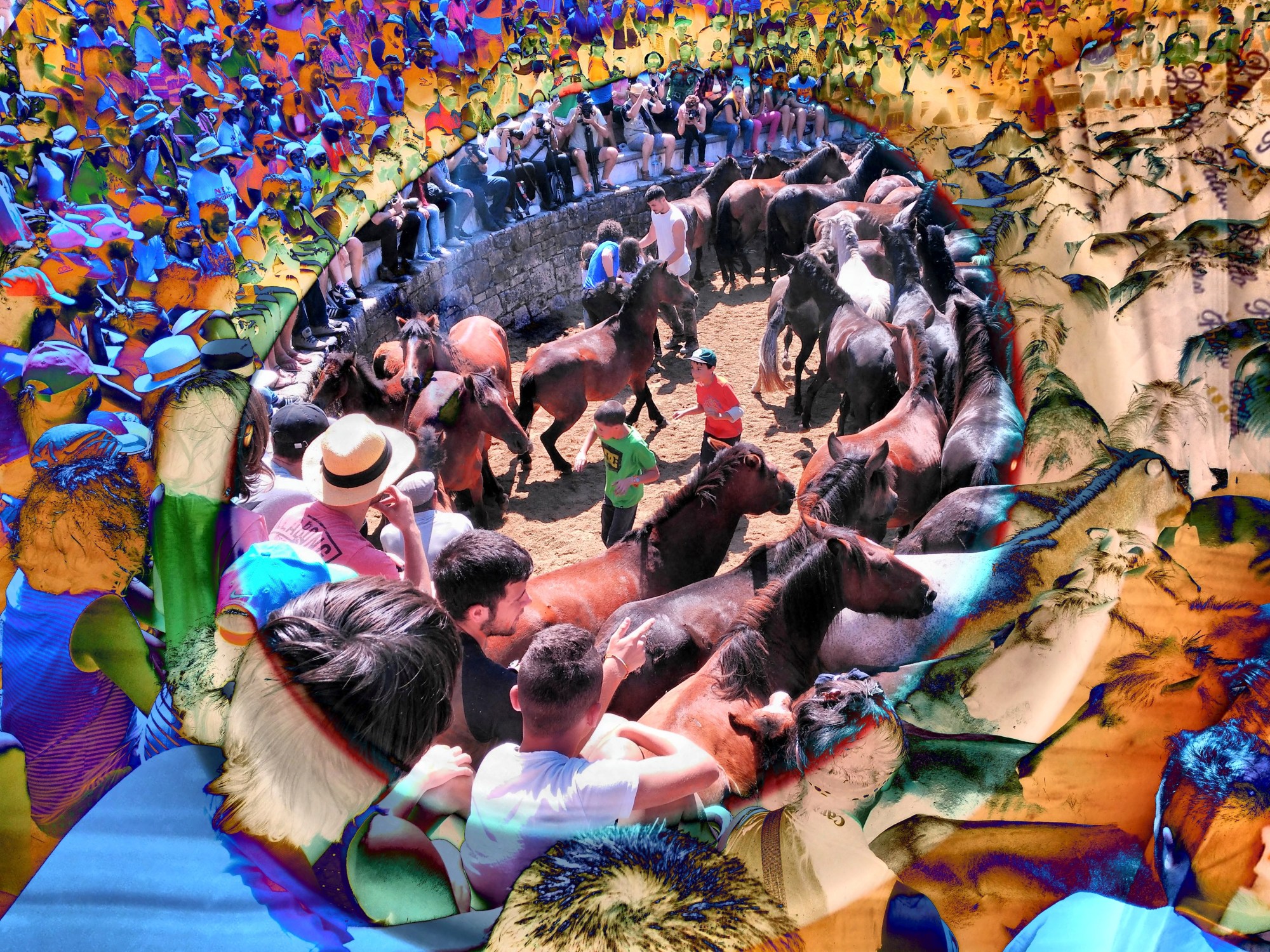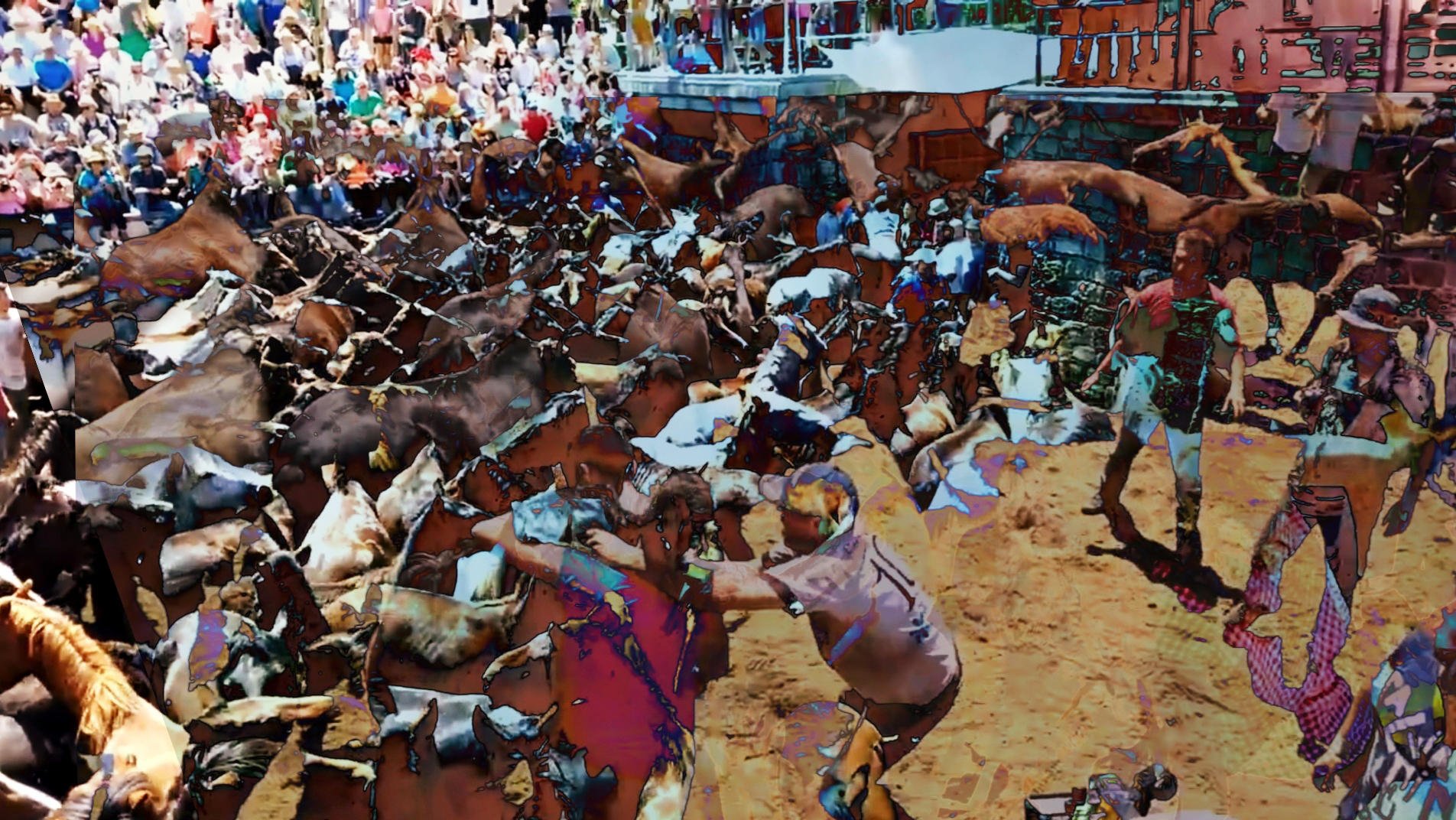FERNANDO VISCASILLAS
// Fernando is not a photographer. Or so he says. He considers himself a painter using digital photography as one of his mediums, having studied fine art in Spain. He transforms his photographs into fantastic colourful worlds using digital tools. We present a series of images from an annual ritual in Sabucedo, Galicia, “a rapa das bestas”.
Fernando is very modest in saying he is not a photographer in a day and age when so many people apply that label to themselves. “That word deserves too much respect,” he says. “I consider myself more of a painter who has been able to launch his photographic work in recent years thanks to digital technology.” Fernando started studying Fine Arts at the University of La Laguna, in Tenerife, Spain, and although his training was that of a painter, photography was always there by his side. “It was like Cinderella. I took a lot of photos, both for my documentation and for my own pleasure in taking them. The problem for me was the creative process. Analog photography requires time in the laboratory, development in the darkroom, and time in the process itself. As an artist, I am more impulsive, I need to see more quickly the steps I am taking during the process and to be able to manipulate the images.”
After his art studies Fernando returned to his home region Galicia in Northern Spain, began a doctorate and worked as a drawing teacher in art schools and secondary schools. He works on urban design, installation, painting, drawing, sculpture, and of course photography. His artworks have been exhibited in solo exhibitions in Italy, France, Portugal, Spain, Tokyo, Monte Carlo, London and in at least 35-40 group shows. At the Biennale of Contemporary Art in Florence in 2003 he was awarded the Lorenzo il Magnifico Medal.
It was really the advent of the digital age of photography that caused him to start spending more and more time on photography and learning the use of different editing programmes.
More recently Fernando has dedicated himself almost exclusively to various photographic projects, finding the improvement of cell phone cameras to be a fantastic opportunity. “I no longer carry the photography gear as I used to, I go on a light trip and take all the photos that I want. I have even gained in discretion, nobody knows that I am photographing them, I go unnoticed.”
“Artist quotes remind me of the broken phone game. Someone said that he told someone he heard say that they said WHAT that artist had said. And who knows what he said, if he said what the one who claimed to have heard WHAT the OTHER one HEARD said, said to him…”
Fernando Viscasillas
What draws you to the arts?
“When I was a child I would not stop drawing, time passed without realizing it. I read all the art books and books about artists’ lives that were in my house. At 15 I already wanted to be a painter, study fine arts and have a comfortable job as a teacher to have time to develop my artistic career.
I always have projects, I have always had my own inner world, I am never bored, it is fortunate for me, and there is nothing more importantj to me, except family, than the world of art. When I am teaching and my students do not need me, I usually take the time to look at my iPad at the projects that I have underway. The exhibitions that I do also serve me to travel with the family, and I usually attend other exhibitions both in galleries and museums. But the most exciting moment of glory for me is the opening day of my exhibitions. So I feel like a god, I’m sorry, at that moment I don’t feel humble. I am proud of my work and I really enjoy it because the creative process that I usually develop also wears me out a lot. I even lost all my hair preparing an exhibition. Fortunately, I got it back within four years, but instead of a head I had a light bulb.”
What do you like best about your art series about the Rapa das Bestas?
“The composition and the colour. I have a lot of fun doing multiple exposures and manipulating the colours until I get to the final result. … And I enjoyed a wonderful day with my friend Domingo Barros, his son Andrés and their wild horses in Sabucedo.”
Sabucedo is a small town near Pontevedra, Region of Galicia, northwest of Spain. “A rapa das bestas” (The Shaving of the Beasts) is the name of the annual roundup of wild horses, which the town celebrates in July. “Bestas” is Galician for mares.
This fiesta dates back to the 15th century. It constitutes a “noble confrontation” between man and horse. The “Wrestlers/Aloitadores” head for the mountains to find wild horses living in the area, bring them back to the village and cut their manes (a ritual known locally as “a rapa das bestas”) in a stone corral (“curro”) in the centre of town. The most important part of this process in Sabucedo is that neither ropes, sticks, nor other instruments are used to subdue the animals. The horses are also tagged, nowadays with a microchip, and given a treatment against parasites, and then taken back to the mountains to live their free lives, until the following year. Although they have owners, who visit them during the year to check that they are well, they are allowed to roam free. “I had the opportunity to experience a wonderful day from 7 in the morning, when I went with my friend Domingo Barros and his son Andrés to look for his herd of horses in the mountains and there, together with other owners of other herds, herd them all together with the people down to the circular stone “curro”. There are stands for the people who visit this festival from around the world.” During the rapa festival, at nightfall the village residents all come together to enjoy food, music and wine.
This ancient tradition with a strong ritual element has attracted the attention of anthropologists from around the world. “This is truly a unique ethnographic experience, and an enjoyable Saturday expedition to the woodlands with town residents to gather the horses,” says Fernando.
To create his photo art, Fernando uses iPad programs like Colorama and Rooky. “These programmes are immediate, I work impulsively with my fingers on the screen, making multiple exposures and playing with composition and color. I hardly use filters, they are very artificial, I create the textures. I don’t use Photoshop, it is very slow for me.”
Fernando´s last exhibition was in 2018, photography and painting at the Art Rooms Fair in London. Then COVID 19 arrived and everything stopped. For now.
Photos may be cropped for layout. Click on the photos to see a larger image.
ALL PHOTOS © FERNANDO VISCASILLAS
To see more of his photography visit Fernando´s website.
Fernando does not have a social media presence.










